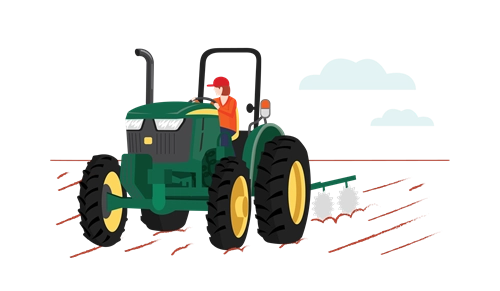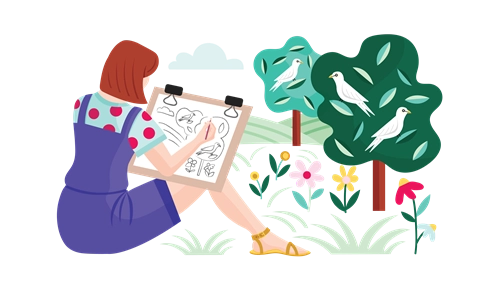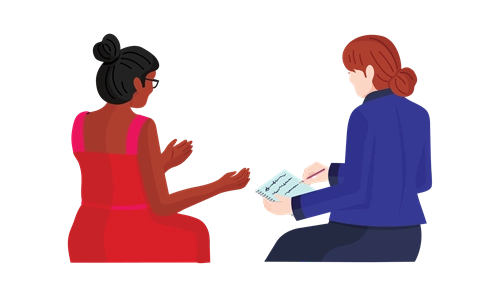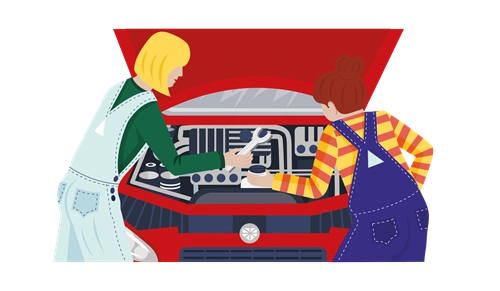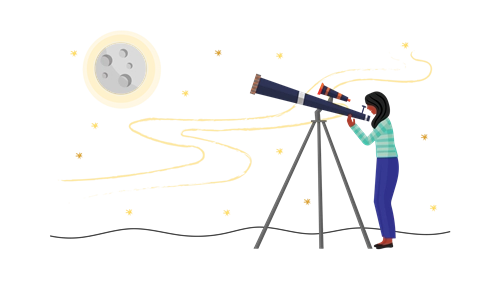-
Curriculum alignment
Mathematics
Year 5 Measurement and Geometry
Choose appropriate units of measurement for length, area, volume, capacity and mass (ACMMG108 – Scootle)
Use a grid reference system to describe locations. Describe routes using landmarks and directional language (ACMMG113 – Scootle)
Year 6 Measurement and Geometry
Convert between common metric units of length, mass and capacity (ACMMG136 – Scootle)
Solve problems involving the comparison of lengths and areas using appropriate units (ACMMG137 – Scootle)
Introduce the Cartesian coordinate system using all four quadrants (ACMMG143 – Scootle)
Science
Year 5 Science Understanding
Living things have structural features and adaptations that help them to survive in their environment (ACSSU043 – Scootle)
Year 6 Science Understanding
The growth and survival of living things are affected by physical conditions of their environment (ACSSU094 – Scootle)
Year 5 and 6 Science as a Human Endeavour
Scientific knowledge is used to solve problems and inform personal and community decisions (ACSHE100 – Scootle)
Design and Technologies
Year 5/6 Processes and Production Skills
Critique needs or opportunities for designing, and investigate materials, components, tools, equipment and processes to achieve intended designed solutions (ACTDEP024 – Scootle)
Generate, develop and communicate design ideas and processes for audiences using appropriate technical terms and graphical representation techniques (ACTDEP025 – Scootle)
Select appropriate materials, components, tools, equipment and techniques and apply safe procedures to make designed solutions (ACTDEP026 – Scootle)
Negotiate criteria for success that include sustainability to evaluate design ideas, processes and solutions (ACTDEP027 – Scootle)
Develop project plans that include consideration of resources when making designed solutions individually and collaboratively (ACTDEP028 – Scootle)
- S
- T
- E
- M
Bee habitat
Years 5 and 6
Learning hook
- Ask your students what they think of when they imagine a bee. Now show them the first slide in the supporting presentation. That was it, right? The European honey bee. Now ask them to try to imagine another bee … Can anyone do it? Lots of people don’t realise, but there are almost 2000 native bee species in Australia!
- Have students complete a KWL chart to list what they know (K) about Australian bees, and what they want to know (W). Students can return to the chart at the end of the unit to reflect on their learning(L).
- Watch the 4-minute video from Ag Excellence Alliance. Dr Katja Hogendoorn, from the University of Adelaide, discusses native bees and their importance for our natural environment.
- Meet another local expert: Dr Tanya Latty is an environmental scientist at the University of Sydney. Students can learn more about insects, and Dr Latty’s role as an insect expert, on the Enquiring Minds website.
Girls in focus
Role models enable girls to see themselves in STEM careers. Showing students gender-balanced role models of all ages, nationalities and cultural backgrounds supports them to make connections to STEM practitioners.
Learning input
-
View the slides showing native Australian bees.
-
As a class, explore the school grounds to identify areas where bees might be spotted (areas with flowers in clumps of 1 m2 or more), and annotate a grid or Cartesian coordinate map to show target areas. Decide on a good time to go on a bee hunt.
-
Allocate specific bee observation sites to small groups of students, identifying the area by its reference on the map, and have them visit each location once a day for three to five days, recording the number of bees observed. As a class, discuss the findings. Is the school a good bee habitat? What would explain the number of bees observed?
-
Australia has more than 1600 native bee species. Native bees range in scale from 2 mm to 24 mm long. In the video, Dr Hogendoorn says that is like the difference between a rabbit and an elephant. To understand the relative size of native bees, students will create scale illustrations. Show students a short In Situ Science video on scientific illustration to get them started.
Safety note: Most species of Australian native bees are unlikely or unable to sting. However, it is possible to be allergic to the sting of native bees, and the introduced honey bee may also be present and can sting. Students should observe bees from a distance, and any students with known allergic responses should be accompanied by a teacher.
Girls in focus
Providing a local context helps girls to engage with their STEM learning. Research shows that girls desire relevance and social value. Creating a learning experience that enables students to use their STEM learning to make a tangible difference demonstrates that STEM careers can have a positive social impact.
Learning construction
- Students work in groups of five to create to scale scientific illustrations of some native bees to show the range of size. They should decide on the scale they will use and each select a bee to illustrate. They can search for additional images online. The PaDIL website has excellent specimen images. Five suggested bees are shown in the presentation.
- Quasihesma bee – 2 mm long*
- Sugarbag bee – 4 mm long
- Blue banded bee – 11 mm long
- Teddy bear bee – 12 mm long
- Great carpenter bee – 24 mm long
*Note that the Quasihesma bee specimen includes a scale; draw students’ attention to the scale and have them check the actual size of the bee on a ruler.
-
Students can label their illustration using the bee anatomy slide as a guide. They should be encouraged to notice specific adaptations like the hairs that enable bees to carry pollen ‘baskets’ on their hind legs. More information on bee anatomy is available on the Arizona State University Ask a Biologist website.
Girls in focus
Connecting the creativity of drawing to the maths demonstrates the potential to harness your passion by pursuing a STEM career. Many girls do not appreciate the creative opportunities within STEM, particularly with reference to maths skills.
Learning input
- As a class, discuss what bees need to survive:
- a food source
- water
- a safe nesting area.
-
First, you will need to find out what bees live near you. Use the Aussie Bee website to identify bees that occur in your state, and the type of nest the bee prefers.
Bee hotels are artificial nesting sites that can help bees who have had their habitats destroyed by land clearing and urbanisation. View the presentation to see some different bee hotels. Notice the size of the holes. As a class, discuss what sized holes would best suit the bees in your area.
Learning construction
- Students work in small groups to design and build a bee hotel for their bee observation area. Students should begin by collecting materials they could use to build the hotel. They should focus on recycling materials from school or home, or using natural materials. If you have a nearby reserve or park, students could go on a scavenger hunt to source materials for their bee hotel.
- Students then build their hotel, ensuring that the size of the holes is appropriate for the bees they are targeting. Once the hotel is built, students should take a photo and annotate it digitally or physically to show the width of the holes.
- Students position their bee hotels and create a bee tour map (using either a grid or a Cartesian coordinate map) showing the best path to take to observe the bee hotels. They encourage parents and community members to take a bee tour around the school grounds using the map.
- Students can develop their bee environment further by adding a bee bath and planting a bee-friendly garden (see additional resources).
- At the conclusion of the project, students should return to their KWL chart and complete the what I learned (L) column.
Girls in focus
Girls should be encouraged to be creative and to experiment with their bee hotel designs. Bee hotels can be both functional and aesthetically pleasing. Girls are motivated by social learning opportunities, but care should be taken to ensure that all students engage with the hands-on features of the task.
Rubric
-
Rubric
Assessment
Bee hotel design and map
Criteria
Beginning
Achieved
Exceeded
Bee hotel materials
Creates a bee hotel out of found materials
Selects materials to provide appropriate habitat for local bee species.
Selects materials to provide robust, site-appropriate, aesthetically pleasing habitat for local bee species.
Bee hotel design
Bee hotel is designed to accommodate a bee species.
Bee hotel is designed to accommodate bee species and deter larger insects.
Bee hotel is designed to accommodate specific bee species in each section, and to replicate their natural nest habitat.
Bee hotel construction
With guidance, works collaboratively with other students and uses some tools and techniques.
Works collaboratively with other students and safely uses tools and techniques.
Works collaboratively with other students to support own and others’ safe use of tools and techniques.
Bee hotel measurements
Measures width of holes and annotates photo.
Measures width of holes and annotates photo.
Accurately measures width and area of holes and annotates photo using appropriate units.
Bee tour map design
Constructs a map showing key landmarks.
Constructs a map showing key landmarks and provides a scale.
Constructs a scale map showing key landmarks and relative distances to scale.
Bee hotel locations
Locates bee hotels on the map relative to key landmarks.
Accurately locates bee hotels on the map relative to key landmarks and uses grid references to identify them.
Accurately locates bee hotels on the map relative to key landmarks and uses Cartesian coordinates to identify them.
Resources
- Build a bee hotel (Backyard Buddies)
- How to make a bee bath
- Native bees are powerful pollinators, and there’s a simple way to help them (ABC)
- The great Australian bee challenge: Four families are challenged to successfully keep a honeybee hive (two 60-min episodes)
- Beeswax wrap project: Extend students’ engagement with bees by exploring this lesson
- How to make your garden native bee friendly (CSIRO)
- Native bees information sheet (WA Museum)
- What is a bee hotel and how can it help? (Aussie Bees)


